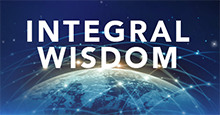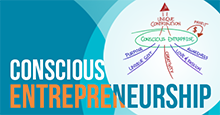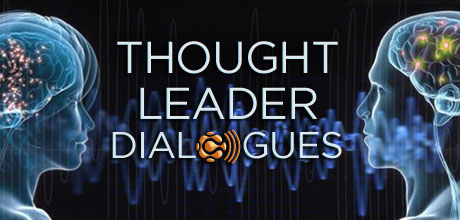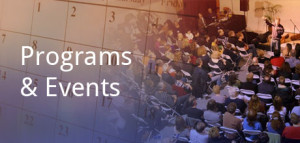CosmoErotic Humanism
CosmoErotic Humanism & Homo Amor
CosmoErotic Humanism is not one metatheory but more a worldview, or said even more precisely, a world story, much like the way existentialism or romanticism or rationalism integrate validated information and wisdom streams across multiple domains.
CosmoErotic Humanism integrates the validated information and wisdom of the leading-edge world stories in premodern, modern, and postmodern thought. It aggregates key data, validated insights, and metatheories from each of these periods into a larger story of value, rooted in evolving First Principles and First Values.
These include Unique Self Theory, Tenets of Intimacy, Value Theory, the Faces of Eros, developmental theory, Integral theory, Evolutionary Love Principles, Conscious Evolution, the Phenomenology of Eros, educational theory, evolutionary theory, attachment theory, and more.
When the evolving First Principles and First Values are integrated into a story of value, what emerges is what we have called the amorous Kosmos, the Intimate Universe, the CosmoErotic Universe, or the Universe: A Love Story. These are different names for the core universe story of CosmoErotic Humanism.
CosmoErotic Humanism understands evolution to be the Love Story of the Universe. Moreover, it is only in the context of such a love story that one can protest against evil, act to heal suffering, and partner with and as the evolutionary impulse in the healing and transformation of Reality.
Read more about CosmoErotic Humanism.
Read the Evolutionary Love Creed, one of the core statements of CosmoErotic Humanism.
For a deeper dive into the history and what is forthcoming in this epic cultural project of CosmoErotic Humanism:
What Gafni and Stein now term CosmoErotic Humanism was first formulated by Gafni in The Mystery of Love, 2003, with important dimensions being unpacked in his two-volume opus Radical Kabbalah, 2010, in both the first and second volume. It was further expanded in Your Unique Self, and particularly, in the chapters on Eros and the appendix on Evolutionary Love. It is also worth looking at the Journal of Integral Theory and Practice that did a full issue on Unique Self Theory in this regard:
- “The Unique Self and Nondual Humanism: A Study in the Enlightened Teaching of Mordechai Lainer of Izbica” (JITP Vol. 6)
- “The Evolutionary Emergent of Unique Self: A New Chapter in Integral Theory” (JITP Vol. 6)
- “Unique Self as it Unfolds over the Arc of Development” (JITP Vol. 6)
What Gafni and Stein refer to as the CosmoErotic Universe with its in-depth relation to the Field of Desire, and particularly, the sexual, received an even more complete formulation in A Return to Eros, 2017, by Gafni and Kincaid, which was reviewed and extensively expanded on by Stein in his essay, “Metaphysics of a Return to Eros.”
There are presently multiple major works in CosmoErotic Humanism by Gafni, Stein, and Hubbard, slated for publication in spring/summer 2023, that directly revolve around CosmoErotic Humanism.
This includes:
Evolution: The Love Story of the Universe
Subtitle: The Next Step in Conscious Evolution
Reading Line: First Steps in CosmoErotic Humanism: A New Story of Value in Response to the Meta-Crisis – Volume 1
The Universe: A Love Story
Subtitle: The Next Step in Conscious Evolution
Reading Line: First Steps in CosmoErotic Humanism: A New Story of Value in Response to the Meta-Crisis – Volume 2
The Intimate Universe
Subtitle: The First Principle and First Value of Intimacy: First Meditations
Reading Line: First Steps in CosmoErotic Humanism: A New Story of Value in Response to the Meta-Crisis – Volume 3
Global Intimacy Disorder as Cause for Global Action Paralysis
Subtitle: What the World Looks Like Sans First Principles and First Values
Reading Line: First Steps in CosmoErotic Humanism: A New Story of Value in Response to the Meta-Crisis – Volume 4
From Conspiracy Theory to the Great Conspiring of Reality
Subtitle: Information as Intimacy: Healing the Broken Information Ecology
Reading Line: First Steps in CosmoErotic Humanism: A New Story of Value in Response to the Meta-Crisis – Volume 5
Homo amor manifesto
Homo Amor and CosmoErotic Humanism: First Thoughts [which was completed in 2018 and is only being published now]
There is yet another major writing project of CosmoErotic Humanism, which is forthcoming, entitled The Phenomenology of Eros, by Gafni and Kincaid. The Phenomenology focuses on a new narrative of desire and sexuality, and identifies and describes seven levels of Eros and desire. It has been described by early readers as “world-transforming.”
There are two versions of the Phenomenology. The first, The Abridged Phenomenology of Eros
(four volumes), is slated to be released in spring/summer 2023. The second, The Complete Phenomenology of Eros (12 volumes), is slated for release in 2024.
An even deeper dive into CosmoErotic Humanism, for those who track intellectual and publication history
The next paragraphs are for those interested in a very short tracing of the publication history of Gafni and Stein’s world philosophy of CosmoErotic Humanism over the last twenty years.
Gafni and Stein’s world philosophy of CosmoErotic Humanism originates with Gafni’s The Mystery of Love book published in 2003.
It is also perhaps worth noting, for those who track these sorts of things, that Gafni discussed his work The Mystery of Love, both in its general parameters and specifically in regard to the notion of Kosmic Eros being the very nature of Reality—with the sexual as an expression and model of this larger Eros—with Moshe Idel, who was his co-doctoral thesis advisor at Oxford University, in the Bar Ilan library in 2002.
Idel enthusiastically validated, from his perspective, Gafni’s direction and readings of the original sources as he shared them at the time—as expressing a CosmoErotic Eros—Eros as the animating force of Kosmos, in which we participate—as well as sharing with Gafni, at that time, that he was working on a volume in a parallel direction.
The notion of a CosmoErotic perspective in Kabbalah is clear throughout The Mystery of Love—and various iterations of this phrase were deployed by Marc in teaching, prior to Idel’s publication of his own work in this regard in 2005, under the title Kabbalah and Eros.
It is also perhaps worth mentioning that another leading Kabbalah scholar, Eliot Wolfson, whom Gafni did not know personally, also contacted Gafni in 2003, after happening across a copy of The Mystery of Love (after the first hardback edition was published before the paperback), expressing appreciation for the textual readings, all of which revolve around Kosmic Eros. Wolfson also generously added an approbation to the paperback work calling it “a beautiful book that will undoubtedly inspire many people and perhaps even bring some healing to a desperately ill world.”
The philosophy of CosmoErotic Humanism is also at the very core of Gafni’s two-volume work Radical Kabbalah. In that work, the text from Solomon’s Song of Songs, Its insides are lined with love [as read by Lainer according to Gafni], is understood to refer to the Kosmic Reality of what Gafni, in those volumes, termed acosmic humanism, and later, Nondual Humanism, and finally renamed it, together with Zak Stein, Barbara Marx Hubbard, and Kristina Kincaid, as CosmoErotic Humanism.
It is also perhaps worth noting that Idel was Gafni’s thesis advisor at Oxford University, while writing Radical Kabbalah, the core of which was written between 2001-2004.
Idel, in his own work, deployed the term cosmoeroticism in a different way than Gafni’s teaching, as he included several different strains of this notion, some of which linked Eros and desire from the sexual to all dimensions of desire, as Gafni did in the prior The Mystery of Love, and some of which split off sexual desire from what Gafni referred to as the larger Field of Desire.
It is thus important to distinguish between Idel’s general deployment of the term cosmoeroticism, and Gafni and Stein’s deployment of CosmoErotic Humanism.
For indeed, several of the deployments of cosmoeroticism by Idel are in fact anti-humanistic and split between embodied desire and the larger Field of Desire, in which the full range of desire includes intellectual, spiritual desire, and more. In contrast, Gafni and Stein’s deployment is profoundly humanistic, hence their original term CosmoErotic Humanism.
CosmoErotic Humanism, however, is rooted not in a secular humanism, but what they term an acosmic humanism, as well as nondual humanism. This is a humanism of apotheosis—what the lineage sources called Metatron—where the Field of Divinity and the field of humanity are realized to ultimately participate in the same indivisible fabric of Reality. And the human being is realized to be an irreducibly unique incarnation—configuration—of the larger Field of Eros and Desire.
From the archive on Integral Wisdom:
Integral wisdom is the reweaving of the great story. In the earlier world, what we call the traditional period, there were great stories which connected the dots of reality and explained to us how things work. Those stories had great strengths. They told us an enormous amount that was important in mapping the inner and the outer, the interior and the exterior nature of reality.
The problem is, those stories were true but partial, they were limited, they overreached, and they claimed information they didn’t have. They were dogmatic, they were often xenophobic, they were often homophobic, they didn’t honor the feminine, and they didn’t have a sense of equitable fairness for all human beings.
So, they were insufficient, they had important truths about the inner nature of essence, and yet, they didn’t have critical truths that we need in terms of what it means to be a human being. Then erupted the modern period. And the modern period was the period of the emergence of democracy and human rights, and feminism, and rationalism, and personal achievement, and individuality; and that period had important and critical truths.
It lost, it forgot some of the critical truths of the earlier period. The forgotten truths of the traditional period that told us about enlightenment, that told us about direct relationship to the personal face of spirit that knows your name; that spoke to us of Shamanism; that spoke to us of the earth which is alive; that invited us to genuine transformation through practices of waking up.
And yet, that traditional period, that premodern period didn’t have all of the goods, all of the dignities of modernity in its wisdom that I just described. Along came postmodernism. And postmodernism was the realization that actually all truths seem to be context-bound, as Derrida said it, “everything lives in a context, all truth lives in context.” There is no truth that actually lives independently.
And postmodernism said that you actually have to know what’s the underlying social context, historical context, psychological context for any narrative. But in doing so, and making this important critical observation that produced multiculturalism, that produced pluralism. What postmodernism did, was actually denuded and destroys all narratives. It said that all narratives are merely contextual, that they don’t actually contain genuine insight, genuine truth, genuine guidance which is rooted in eternal and lasting understanding and truth.
That was postmodernism: great contribution, again of wisdom but also partial, also denuding and robbing us of any sense of a grand narrative. You might even say that, postmodernism’s contribution was the belief that there are no grand narratives. In fact, the only grand narrative of postmodernity was that there is no grand narrative and therein lay its problem. That itself was a grand narrative, that itself was a claim; the denial of all universals itself was a universal. So postmodernity actually left us wanting, left us without any source, without any sense of a vision of the patterns that connect.
Steps of Integral Wisdom
Zero, ground zero, level zero, you’ve got the wisdoms of the traditional, premodern period.
At Level 1, you have the wisdom of the modern period.
At Level 2, you have the critical wisdom of the postmodern period.
Wisdom 3.0, that’s Integral Wisdom.
What Integral Wisdom does, is integrate the best of premodern, modern and postmodern, and realizing that everyone of these wisdoms had incredibly important insights, was actually mapping part of reality that was accurately seen, discerned, understood, and realized with profound depth. And if you actually link together, if you integrate all of these maps, the best maps of premodernity, the best maps of modernity, and the best maps of postmodernity, and you link them together, you get a vision, a stunning and gorgeous vision of a map of reality.
What reality feels like in the interior, what reality is like in the exterior. There’s a place for brain science and for quarks, and for quantum physics, and for psychology, and for the eleven different schools of psychology, and for ethnomethodology, and for mathematics, and for all the great spiritual traditions… All of it has a place, and all of it is seamlessly integrated, in the best evolutionary vision we have at this moment, of wisdom.
Wisdom. That’s how we live our lives. That’s how we guide our lives. Let’s reclaim a story, let’s reclaim a new universe story, let’s reclaim an integral wisdom which we can use to heal and transform, to evolve ourselves and reality itself.
Welcome to Integral Wisdom.
For more Integral Wisdom, visit our Center for World Philosophy and Religion Website!
For a list of posts and media on this site that engage in Integral Wisdom, click here.














